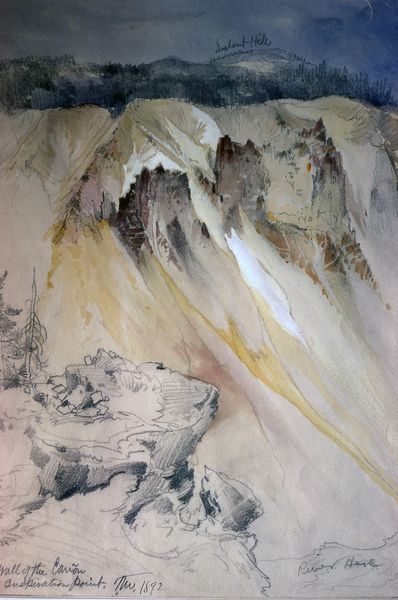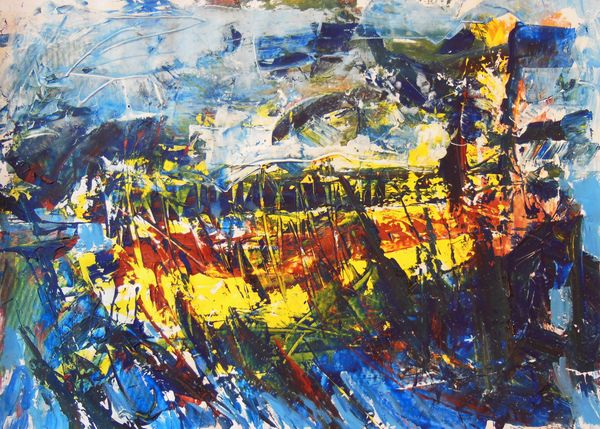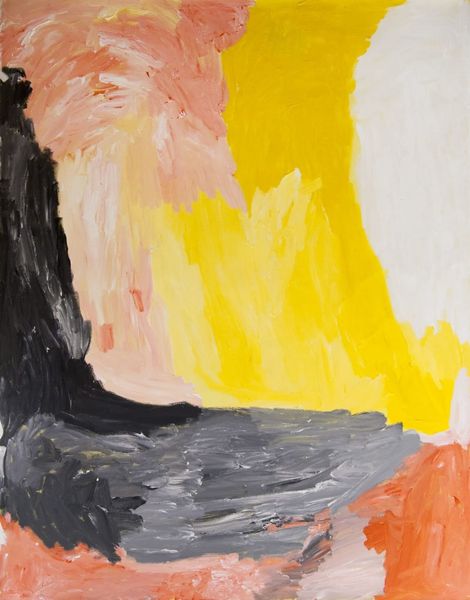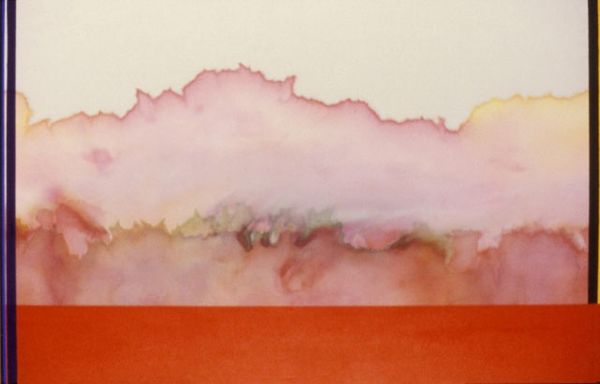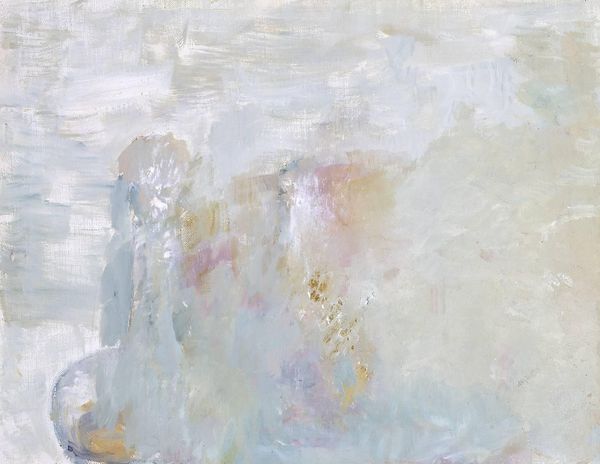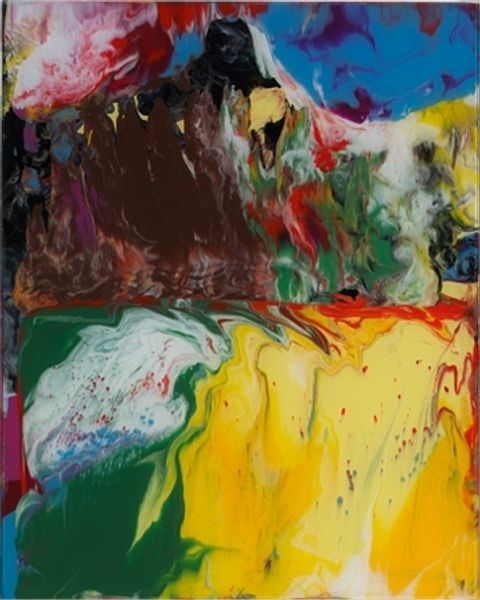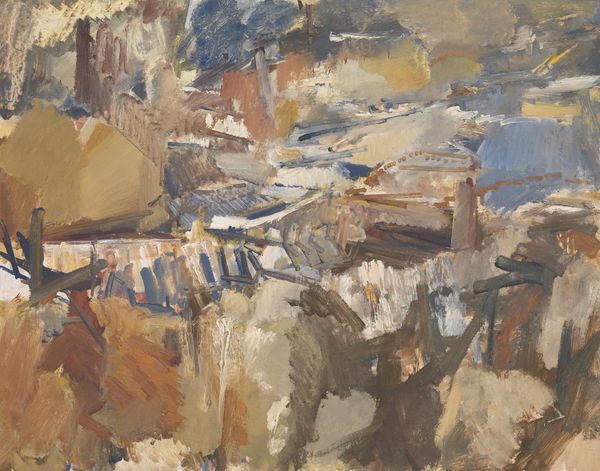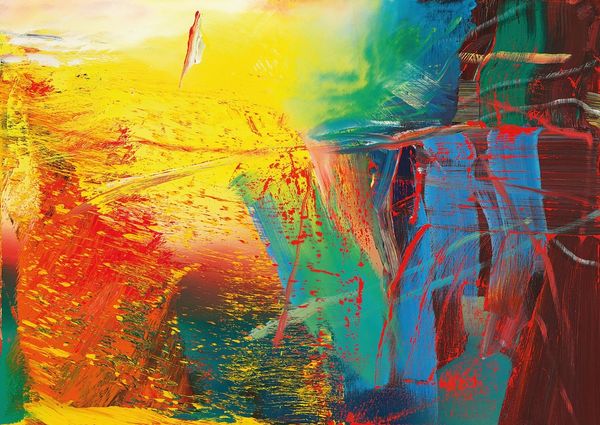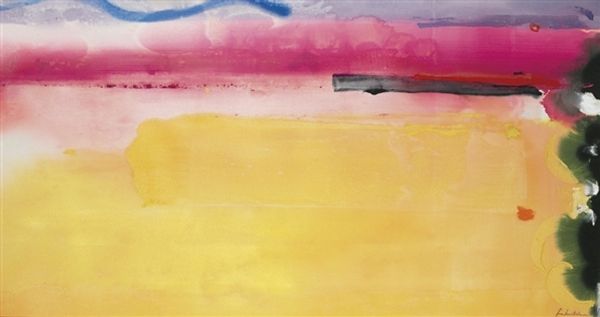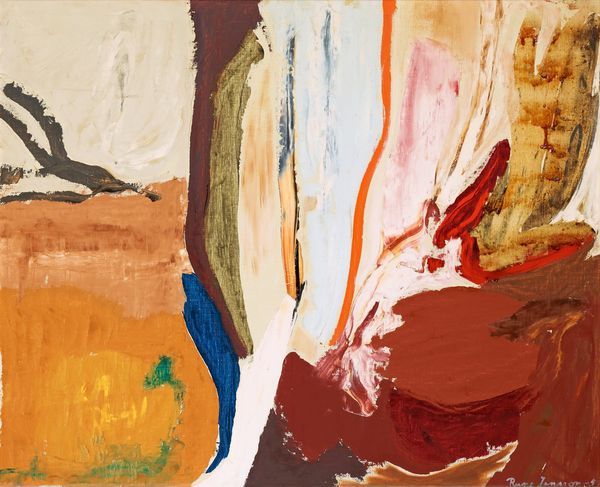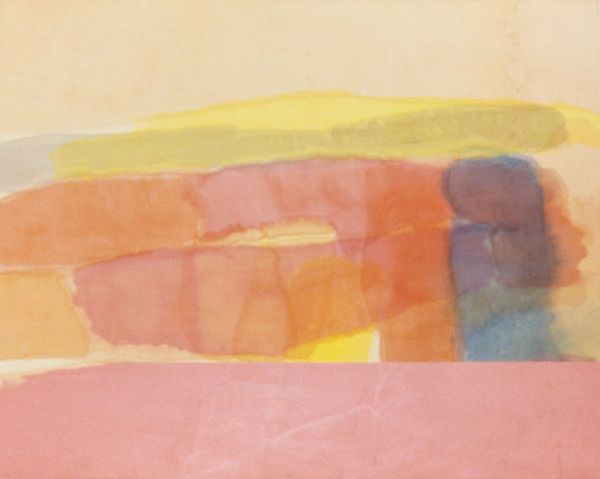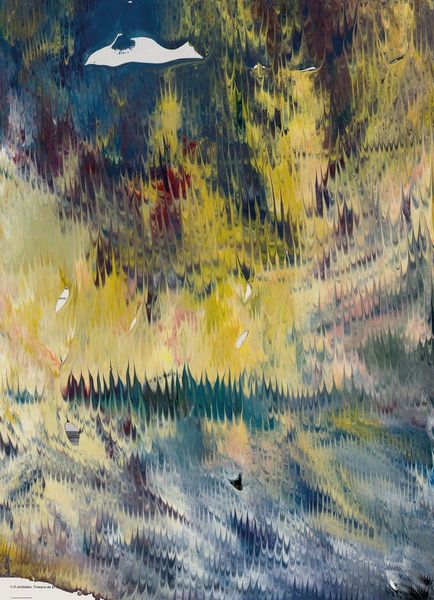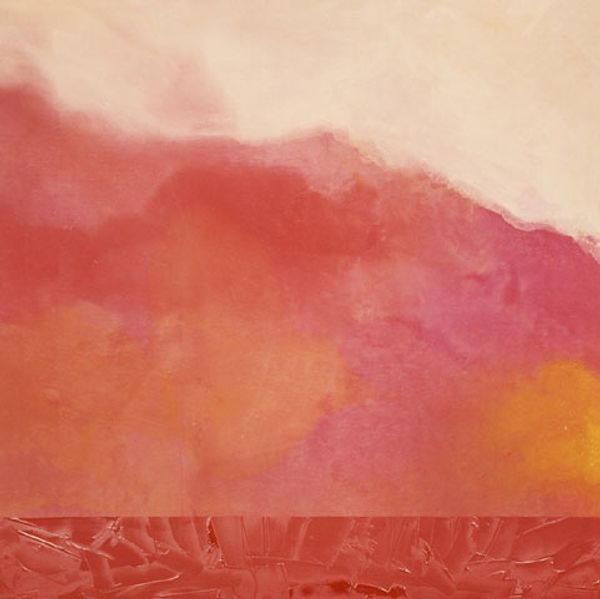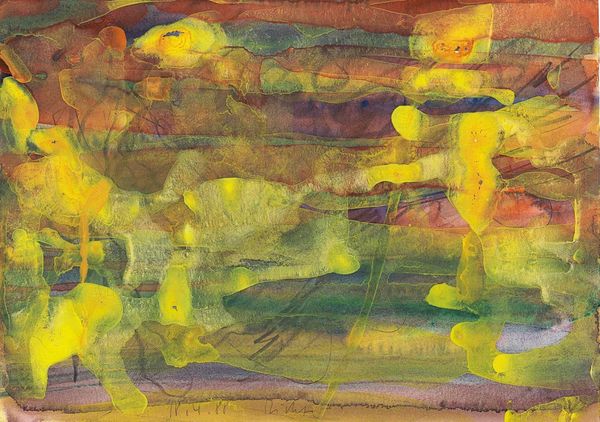
acrylic-paint
#
abstract-expressionism
#
abstract expressionism
#
landscape
#
acrylic-paint
#
oil painting
#
acrylic on canvas
#
abstraction
#
modernism
Copyright: Ronnie Landfield,Fair Use
Curator: Ronnie Landfield's "Danish Opera," painted in 1969 using acrylics, presents an interesting intersection between landscape and abstract expressionism. Editor: It feels strangely optimistic. The layering of colors, especially that vibrant yellow streaking across the canvas, gives the impression of sunlight breaking through storm clouds. Curator: Landfield came into prominence at a time when institutions were questioning the very definition of painting. He embraced a vibrant palette and pushed beyond the rigid confines of the grid prevalent in much minimalist abstraction. Consider the sociopolitical context; 1969 was a year of upheaval, and this painting almost feels like a defiant embrace of beauty. Editor: Absolutely, but even detached from that context, the formal elements are compelling. Note how the composition guides your eye. The upper portion, almost washed out, creates a sense of immense space above those densely layered bands of color. It is very clever. Curator: The landscape influence is undeniable, though far from literal. It's more of an evocation, isn’t it? Like a memory of a place distilled through personal emotion. His work was shown and acquired by key institutions such as the Whitney during his ascent. What do you read from the material choice here? Acrylic allows for this sort of blending effect but also can contribute to flatness if not well-handled. Editor: I think Landfield successfully uses the medium to create a balance. There is flatness in those atmospheric washes, certainly. Yet, the lower bands possess a surprising depth. Look closely, and you see the subtle variations, the impasto. That materiality anchors the more ethereal elements above. Curator: He creates a very direct physical reaction within the viewer which cannot be detached from how museums present themselves as a place for meditative visual analysis. What sort of person can come into an institution, face "Danish Opera," and find new meanings about themselves within? I am confident Landfield gave access to emotions otherwise locked behind societal conditioning. Editor: Ultimately, for me, the painting’s strength lies in its inherent visual interest. Even without any knowledge of the historical moment or the artist's intentions, the relationships between color, form, and texture provide a deeply satisfying aesthetic experience. Curator: Precisely; the piece exists as a visual testament to an interesting moment of defiance and hope, ready for both art historians and casual viewers alike.
Comments
No comments
Be the first to comment and join the conversation on the ultimate creative platform.
